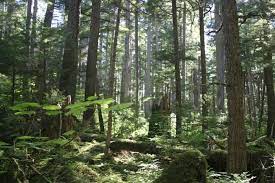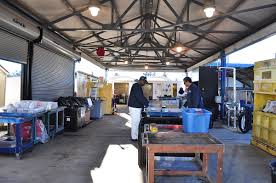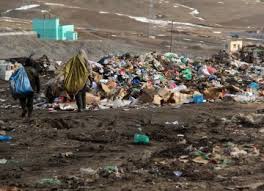The Human Economy and the Natural Environment
The natural environment could be defined as physical, chemical, and biological surroundings that comprise the Earth’s endowment of life-support systems. It includes air, water, land (the Earth’s crust), living system, and even radiation from the sun.
The natural environment is the supplier of all natural resources like arable land, wilderness areas, mineral fuels, nonfuel minerals, watersheds, and the ability of the natural environment to degrade waste and absorb ultraviolet light from the sun, etc.
These resources can be regarded as natural capital from which human economy draws upon.
The human economy consists of all the production and consumption activities of human beings. Such production and consumption activities can occur on land, beneath the Earth’s crust, in seas, in the atmosphere and outer space.
One main characteristic of the human economy is that it produces both useful commodities (goods and services) and non-useful materials called wastes. The inter-linkages between the human economy and natural environmental system cannot be overemphasized.
Humans cannot exist in isolation of the natural system because all economic (even non-economic) activities of man are interconnected with the various other living and non- living endowments of nature.
Similarly, the complex physical, chemical, and biotic factors of the natural system act on man and ultimately determine human form and survival.
The economy depends upon natural capital and reconfigures that natural capital to produce products to satisfy human wants. One characteristics of the human economy is that it produces intended useful product and some by-products.
The by-products of an economic reconfiguration process is referred to as “waste” since the production of these by-products is not the central object of reconfiguration. The production of “waste” from any reconfiguration of natural capital is a necessary consequence of the first law of thermodynamics.
The law says that matter is neither created nor destroyed in chemical reactions, although it may be transformed from one form to another. Any wastes from production and consumption activities are absorbed by the natural environment.
The ongoing reconfiguration of natural capital in the natural system means that the system also acts as a recycling process, this recycling role of the natural system means that it is possible for the economy to continually reconfigure natural capital for human purposes, and for that reconfiguration to be continually reversed through the natural system.
Unfortunately, there are limits to the rate to which materials can be recycled through the natural system in this way. This is to say that the natural system has assimilative capacity. This is sometimes called a “throughput constraint”.
If human activity produces more “wastes” than can be naturally recycled, then, there is a flow of waste in excess of assimilative capacity. This can cause the natural system to change in possibly drastic and irreversible ways.
It should be noted however that drastic and irreversible change in the natural system is not due solely to human activity. For example volcanic eruptions produce vast quantities of pollution.
The relationship between human economy and natural environment can be explained in the form of a “Material Balance Models” developed by Alen Kneeze and R. V. Ayres. The material balance model are based on the first and second law of thermodynamics.
These models consider the total economic process as a physical balanced flow between inputs and output.
Inputs are bestowed with physical property of energy which is received from the sun. the resulting output from inputs carries the same level of energy. Similar to this, there are wastes resulting from consumption activities.
Materials and energy are drawn from the environment, which are used for production and consumption activities and returned to environment as waste. So far as this balance is maintained, there are no environmental issues.

The figure above shows that environment is the supplier of all forms of resources like renewable and non-renewable, and it is also acting as a sinking for cleaning up of waste.
Households and firms are connected to environment, and they are connected too. Households and firms depend on the nature of resources. Both households and firms send out residual consumption and production respectively to nature.
As mentioned earlier nature has the power to assimilate all forms of waste. But this power is conditional. So long as earth is not being disturbed by the excess amount of waste, the earth can clean up natural waste.
Read Also : Human Impact on the Natural Environment
When the earth fails to respond to 3Rs, the symptoms of environmental damage appears. Thus, there is a rhythm in the use and reuse of resources for men by men: earth cannot respond properly to man-made or artificial waste.
Man-made wastes are piling up around us, and therefore, the extent of damage to the environment has been on the rise. All the waste that has been sent out cannot be cleaned up by the sink earth.
As long as earth can discharge this function of cleaning up of pollution due to waste, there would not be any environmental issue. But earth has reached at the saturation point of this process, and it is helpless in cleaning up of several types of wastes resulting in major environmental issues in the world over.
The impact of the transformation of material inputs and energy into output is subject to several changes in the biosphere. The process of transformation is better explained with the help of the laws of thermodynamics.
The first two laws of thermodynamics are worth mentioning in the context. The first law of thermodynamics, which is often referred to as the law of conservation of matter and energy says that energy, like matter, can neither be created nor destroyed, but at the same time the forms of energy can be transformed.
The law stresses that the total amount of energy created through production and consumption activities must be equal to the total sum of initial energy extracted from the nature. Therefore, the first law of thermodynamics implies the accounting identities of material balance model.
The second law of thermodynamics is known as the law of entropy. Entropy is usually considered as the measure of unavailability of the benefits of energy or simply wastes.
When one form of energy is transformed into another (say for example, when the thermal energy of coal is converted into electrical energy) there is waste of energy, and the volume of waste depends upon the technological process.
Entropy will be low, when materials and energy are highly structured and organized. When a piece of coal is kept idle, there is low entropy, but when it is burnt up, the same piece of coal is subject to high entropy, since heat and carbon dioxide are dissipated, but sometimes unavailable for use.
Thus, the second law says that as long as there is utilization of material inputs and energy for production and consumption activities, the level of entropy will be high. Economic activity helps to convert low entropy resources and energy into high entropy waste that is, resources into wastes.
Economic activities cannot be stopped on account of high entropy, but at the same time, through recycling and waste management, it is possible to bring into the economic system, low entropy value.
Use of natural resources, but at the same time with minimal waste or damage to the environment is considered as the key theme of sustainable development. It is a form of development path that is ready to meet the needs (not greed) of the present generation, at the same time without compromising the needs of posterity.
A detailed discussion of sustainable development is included as a separate chapter of this book.
We must know that the environment discharges the following economic functions:
The environment is the supplier of all forms of resources.
The wastes are cleaned up by the environment.
The environment maintains genetic diversity and stabilizes the ecosystem.
The above mentioned functions of the environment are interlinked. In the name of economic activity the environmental resources are transformed into economic goods [converting low entropy resources into high entropy ones].
In this process of transformation, wastes are created. Resources are also getting depleted due to the overuse. When environment is disturbed by the overuse and the huge amount of wastes, it cannot discharge the third function that is, maintaining genetic diversity and stabilization of ecosystems.
It further affects the life and existence of flora and fauna. Therefore an integrated approach to the study of economy, ecology, and environment is essential, as all these are closely interlinked.
A: The Neoclassical Perspective of the Human Economy and Natural Environment
The mainstream Economists have a particular conception of the natural environment, including how it should be managed. The conception emanate from the Classical and neoclassical dominant approach to economic analysis since about 1870s.
The Neoclassical worldview of environmental economic relationship is anthropocentric. This means that the humans are treated on pre-eminent in the natural environment.
Consequently, the human economy is rated above natural environment and humans are regarded as the universe’s most important entity.
The natural environment therefore exists to serve the human economy and environmental resources have no intrinsic value.
Sequel to this worldview, the economy is assumed to depend on the environment for three distinctive purposes:
The extraction of nonrenewable resources (such as iron ore, fossil fuels, etc) and the harvest of renewable resources (such as fish of various species, agricultural products, forest products, etc.) to be used as factors of production;
The disposal and assimilation of wastes; and
The consumption of environmental amenities (such as bird watching, canoeing, hiking national park trails, observing a morning sunrise or an evening sunset, etc.).
Thus, broadly viewed the economy is assumed to be completely dependent on the natural environment for raw materials, the disposal of waste material and amenities
Furthermore, since the earth is ‘finite’ there exists a theoretical upper limit for resource extraction and harvest and disposal of waste into the natural environment.
The qualities of environmental amenities and the maintenance of life support systems (such as climate regulation and genetic diversity) are also affected adversely in direct proportion to the amount resource extractions and/or harvesting and the disposal or discharge of waste into the natural environment.
Thus, as with any other branch of economics, fundamental to the study of environmental economics is the problem of scarcity, the trade-off between economic goods and the preservation of environmental quality.
There are some fundamental assumptions that the standard economics approach uses in addressing this subject matter; these are outlined below.
Environmental (Natural) resources are ‘essential’ factors of production. A certain minimum amount of natural resources is needed to produce goods and services.
Environmental resources are of economic concern to the extent that they are scarce.
The economic value of natural resources (including the service of natural ecosystems) is determined by consumers’ preferences, and these preferences are best expressed by a freely operating private market system.
Market price can be used as a measure (indicator) of resource scarcity, including the environment.
In both the production and the consumption sectors of an economy, a specific natural resources can always be replaced (partially or fully) by the use of other resources that are either man-made (manufactured) or natural.
Technological advances continually augment the scarcity of natural resources.
Nothing is lost in treating the human economy in isolation from the natural ecosystems- the physical, chemical and biological surroundings that humans and other living species depend on as a life support.
That is, the natural ecosystem is treated as being outside the human economy and exogenously determined. Note that to indicate this, the human economy and the natural environment are drawn as two distinctly separate entities.
Clearly, from the above discussions it should be evident that, at the fundamental level, central to the neoclassical economics worldview with respect to the natural environment and its role in the economic process are the following four key issues:
The market as a provider of information about resource scarcity;
Resource (factor) substitution;
Scarcity augmenting technological advance; and
The nature of relationships between the human economy and the natural environment.
Figure: Circular flow diagram of the economic process. An economy is composed of a flow of commodities(in the form of basic resources, goods and services): socialinstitutions(primary markets and legal tenders); and people(broadly identified as households and firms).
According to the neoclassical worldview, the human economy, as depicted in the above diagram, is composed of people, flows of commodities (or flows of matter-energy at the fundamental level) and human institutions.
The primary focus of the human economic system is not so much on the conversion of matter-
B. An ecological perspective of the Natural Environment and the Human Economy
The ecological perspective of the relative between the natural environment and the human economy is biocentric; this implies that the human economy is not viewed in isolation from the natural ecosystems.
The basic objective of the ecological perspective is therefore to establish a clear understanding of the basic principles governing the nature, structure and functions of the biosphere (and by extension, environment resources) and the functional relationship between the biosphere and the human economy.
From a purely ecological perspective, these basic principles and linkage are identified as follows;
Environmental resources of the biosphere are finite. Hence, environmental resources are scarce in absolute terms.
In nature, everything is related to everything else. Moreover, survival of the biosphere requires recognition of the mutual interdependences among all the elements that constitute the biosphere.
At a functional level and from a purely physical viewpoint, the biosphere is characterized by a continuous transformation of matter and energy. Furthermore, the transformation of matter and energy are governed by some immutable natural laws.
Material recycling is essential for the growth and revitalization of all the subsystems of the biosphere, including the human economy subsystem.
Nothing remains constant in nature. Furthermore, changes in ecosystems do not appear to occur in an absolutely linear and predictable manner.
However, measured on a geological time scale, the natural tendency of an ecological community (species of plants, animals and micro-organisms living together) is to progress from simple and unstable relationships (pioneer stage) to a more stable, resilient, diverse, and complex community.
The human economy is a subsystem of biosphere and it would be dangerously misleading to view natural resources as just factors of production lying outside the confines of the larger system.
The natural tendency of human technology is towards the simplification of the natural system, eventually leading toward less stable, less resilient and less diverse ecological communities
Figure attempts to portray a worldview that is consistent with these principles, and more specifically the ecological (biocentric) perspective of the relationship between them.
Figure: Ecologically enlightened economic view. The biosphere is continuously energized by solar power. The human economy (comprising the activities in the inner circle) depends on inputs (throughout) and outputs (disposal of waste) to the biosphere. The biosphere is finite, as indicated by the outer circle.

Biosphere and the human economy: This perspective is biocentric in the sense that it does not explicitly recognize the main output of the economic system – non-material lows of utility (enjoyment).
It describes nature and the interactions that occur in nature between living and non- living matter in purely physical (energy and matter) terms.
First, a clearly demarcated circle, perhaps symbolizing the Earth and its finiteness, represents the biosphere.
Second, by locating it inside the circle, the human economy is perceived as a subsystem of biosphere. The box inside the circle indicates that growth of the economic subsystem is ‘bounded’ by a non-growing and finite ecological sphere.
Third. The figure above suggests that the human economy is dependent on the biosphere for its continuous withdrawal (extraction and harvest) of material inputs and as a repository for its waste (outputs) – degraded matter and energy that are the eventual by products of the economic process.
Fourth, the biosphere (and hence the human economy) requires a continuous flow of external energy – from the sun.
Fifth, while both the human economy and the biosphere are regarded as an “open system” with regard to energy (i.e. both systems require am external source of energy), the biosphere taken in its entirety is regarded as a “closed system” with respect to matter.
Note that this is in stark contrast to the way the human economy is depicted in figure 1.5 – the circular-flow diagram discussed in section X of lecture three diagram actually treats the human economy as an ‘ open system’ with regards to both energy and matter.
That is, the human economy is continuously dependent on external (outside) sources for input of energy and matter and on external repositories for its outputs.
Read Also : How to Reduce the Amount of Wastes Produced
An ecological worldview as represented in Figure 2 appears to incorporate the principle that the human economy is completely and unambiguously dependent on natural ecological systems for its material needs.
Furthermore, the human economy (as a subsystem) cannot outgrow the biosphere. The implication of this is that, as mentioned earlier, the growth of the economic subsystem is ‘bounded’ by a non-growing and finite ecological sphere.
A comprehensive and systematic understanding of the extent to which nature acts as both a source of and a limiting factor on the basic material requirements for the human economy therefore, demands some level of understanding of ecology.
Ecology is a branch of science that systematically studies the relationships between living organisms and the physical and chemical environment in which they live.
Read Also: Complete List of Different Types of Cat Breeds



